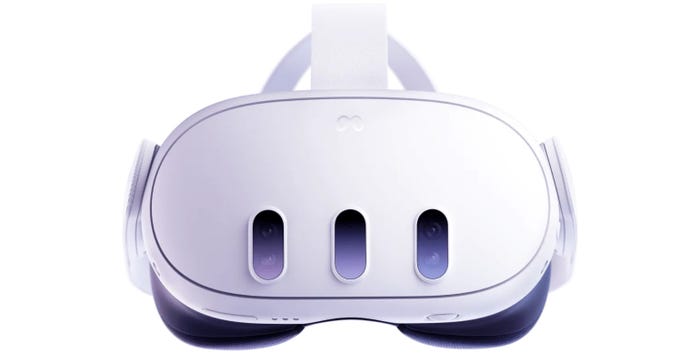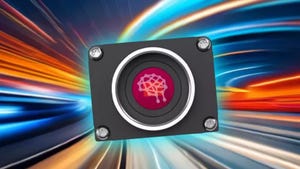What Does Meta’s New $500 Headset Give AR/VR Users?
iFixit's teardown of the Meta's new Quest 3 AR/VR headset reveals a mix of good and bad.
Meta recently unveiled its Quest 3 AR/VR headset, which is half the price of the company’s flagship Quest Pro headset. Electronics repair and teardown site iFixit engaged in a thorough teardown of this complex product, which like other AR/VR headsets crams many parts into its case.
One key feature that was missing on the Quest Pro AR/VR headsets, the time of flight sensor, is prominent in Quest 3. By adopting the Quest Pro’s pancake lenses, the Quest 3 AR/VR headset presents a substantially thinner profile when compared to the Quest 2 it replaced, and yet manages to weigh 10g more than its predecessor.

For half the price of its high-end sibling, the Quest 3 AR/VR headset uses an older LCD instead of a high-resolution micro-OLED display. Another major drawback was the loss of eye tracking.
What the Quest 3 AR/VR headset shares with its other Meta siblings is poor repairability. The iFixit reviewer noted the headset is not easy to take part and service, who had to remove numerous screws to access different parts, including the headset’s lithium-polymer battery which was located near the display.
Unfortunately, no repair manuals are yet available for the headset. The reviewer rated the Quest 3 AR/VR headset a middling 4 for repairability.
You can view the video here.
Spencer Chin is a Senior Editor for Design News covering the electronics beat. He has many years of experience covering developments in components, semiconductors, subsystems, power, and other facets of electronics from both a business/supply-chain and technology perspective. He can be reached at [email protected].
About the Author(s)
You May Also Like





